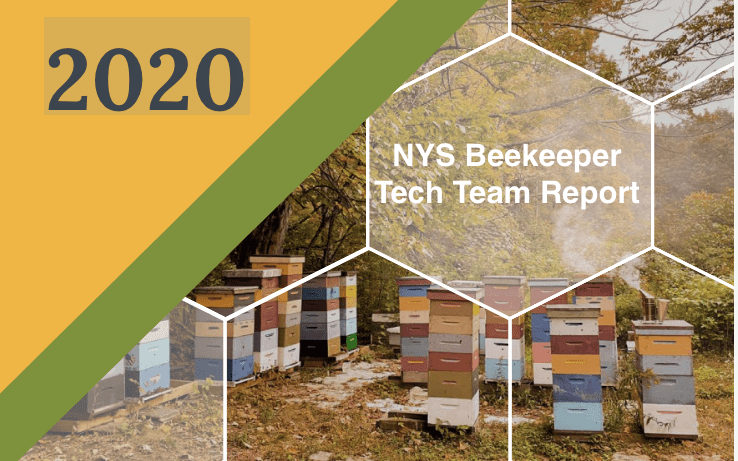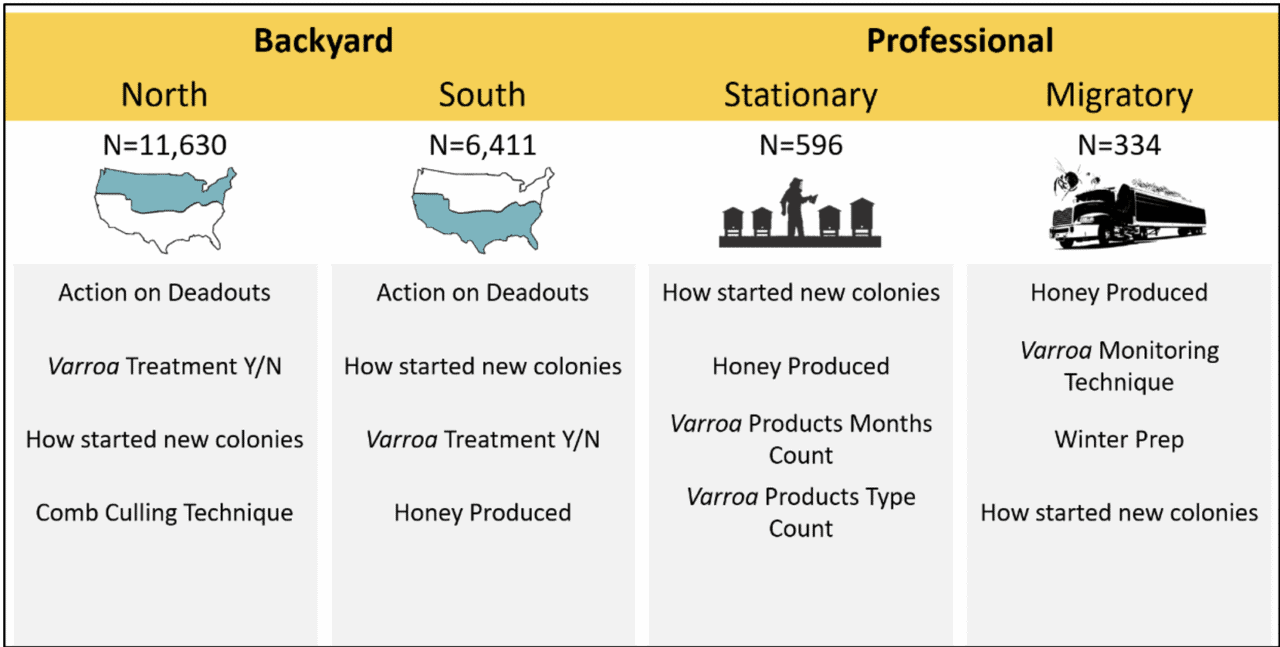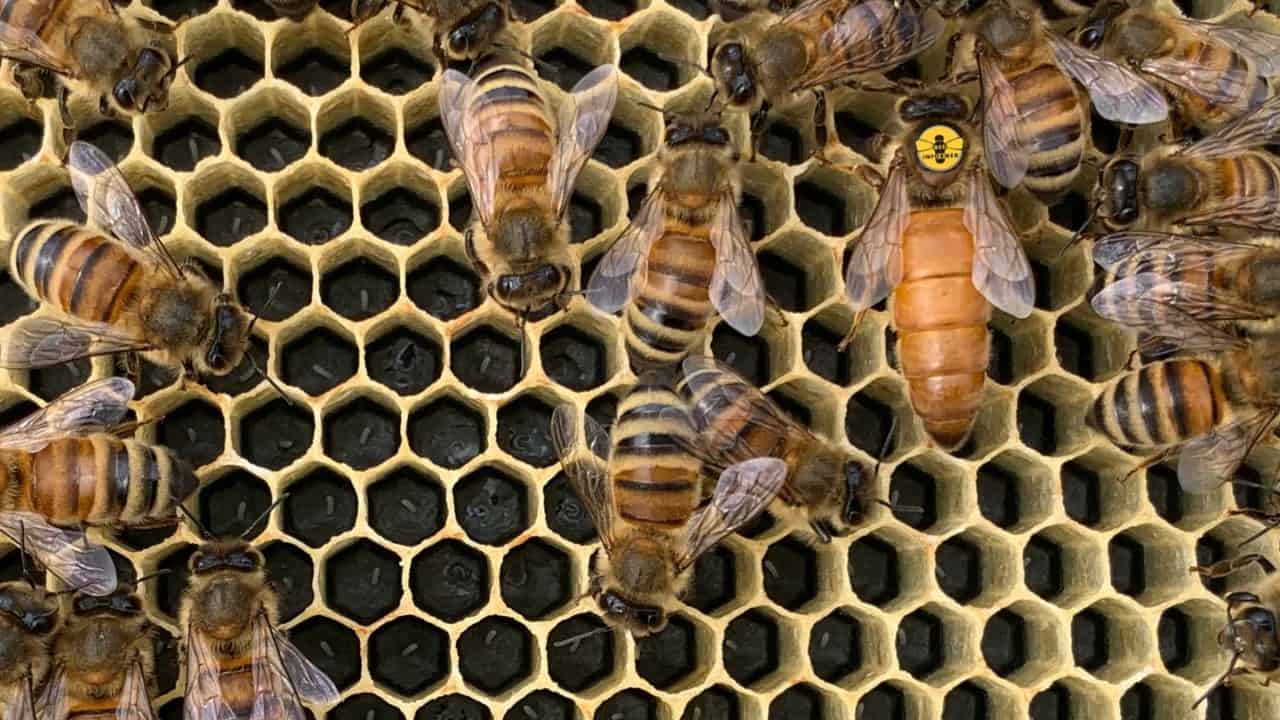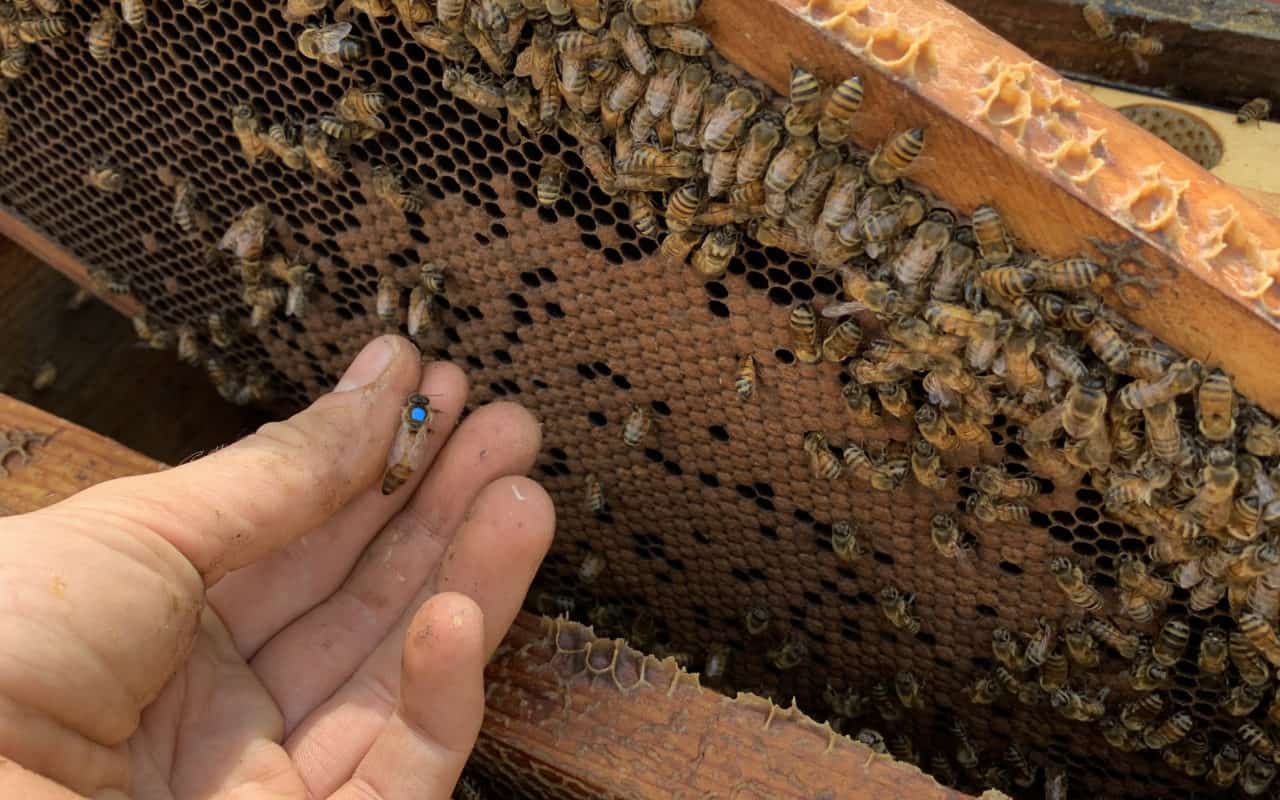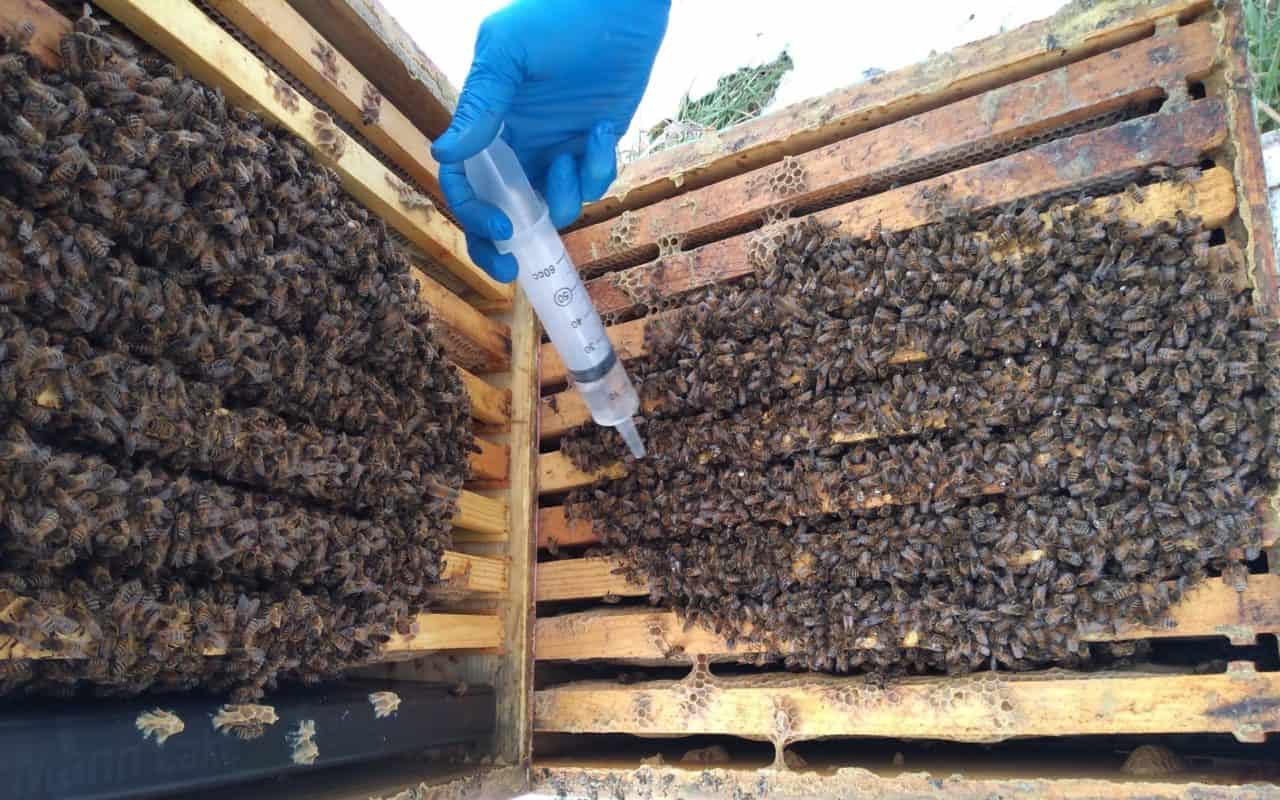Anyone who has been involved in beekeeping quickly comes to realize that there is a lot of ‘stuff’ involved, particularly things that are only used for a portion of the year and must be stored for the rest. While brood chambers, bases, and lids are used year-round, things like supers, escape boards, top feeders and queen excluders need to be stored for a good portion of the year. Beekeeping often becomes an exercise (that can be seen in cluffy.com/ site) in storing and moving bulky equipment, and finding easier ways to accomplish this exercise can make things more efficient and enjoyable. A couple of hives…
Category: Blog
The Bee Informed Blog is the place where team members convey their experience, knowledge, and opinions about their work with bees. Here is your opportunity to follow what’s happening in the field and lab.
Browsing for Breeder Queens-Part 1
What is a Breeder Queen? A breeder queen is selected to be the mother of multiple queens that will then head nucleus colonies "nucs" or other colonies made by splitting existing ones. Mated queens may also be sold to other beekeepers. A breeder queen’s genetics will be passed onto these new queens and, hopefully, her desirable characteristics will be as well. Every breeder queen should possess several general characteristics: solid brood pattern; gentleness; high brood viability; and Varroa/disease resistance. Obtaining a Breeder Queen Breeder queens can be obtained in a couple of different ways. The first is to choose a queen from your own operation.…
A Bee on the Wall: Transporting Honey Bee Colonies to California for Almond Pollination
Written by Grace Kunkel and Sharah Yaddaw, Project Apis m. team members Taking honey bees out of indoor storage (or an over-wintering apiary) and transporting them to California in time for almond pollination is a massive, coordinated effort that commercial beekeepers undertake every year. It isn’t just the beekeepers that make it happen; experienced truck drivers, state inspectors staffing points of entry into California, and almond growers all coordinate for this event. Most importantly, mother nature determines the exact timing of the almond bloom and the driving conditions the truck drivers must navigate to get there. Project Apis m.’s Director of Communications, Sharah Yaddaw, along…
Detecting Wax Moth Larvae in Frames of Sealed Brood
As a honeybee health field specialist, when I am assessing a colony's health I look for irregularities in the sealed or open brood (Image 1 & 2). These irregularities may indicate the presence of diseases or pests. One common pest that can cause brood irregularities is the wax moth. Wax moth larvae develop underneath the honey bee colony's brood cappings. The wax moth larvae often bind a honey bee pupa’s feet to the midline of the of frame, resulting in pupae that are not able to molt properly and therefore die in the capped cell before emergence. When identifying and locating wax moth larvae in…
The New York State Tech Transfer Team Report
As a national organization the Bee Informed Partnership (BIP) is fortunate to collaborate with beekeepers, scientists and educators around the country. These relationships manifest in many different forms but are linked by the common thread of seeking to better understand honey bee health and find ways to improve it. One of BIP's longstanding collaborations has been with the New York State (NYS) Beekeeper Tech Team. The NYS Tech Team program originated in 2016 with funding from the NYS Environmental Protection Fund to address unsustainable colony loss rates throughout the state. The program is carried out by Cornell University in collaboration with NYS Department of Agriculture…
Time flies when you’re having fun – we’re into the last week to take the annual survey!
By Selina Bruckner, Geoff Williams, Nathalie Steinhauer The Bee Informed Partnership Colony Loss and Management Survey month is almost over – time flies when you’re having fun preventing swarming, installing packages, and adding your supers! Have you taken the survey yet? If not, don’t miss out on even more fun! This year’s survey is the shortest it’s ever been! Take the survey here. Time also flies in terms of the years that the BIP survey has been conducted; it is celebrating its 15th birthday! The survey has come a long way since 2006. Here, we review some of the survey’s outputs so far. In total,…
We’ve listened to you: a shorter, better survey for professional beekeepers
Commercial and sideline beekeepers − the Bee Informed Partnership (BIP) Survey Team has worked hard to make our annual survey more relevant for you! We met with a group of commercial beekeepers to get input, and were given two major requests: First, to move away from an arbitrary April 1st survey start date. Second, to reduce the length of the survey. We then went to work! We addressed both of these requests, and also changed the focus of some questions to better reflect the concerns of the industry. Since its beginning in 2006-07, the BIP survey has used April 1st as the cutoff between winter…
BIP National Loss and Management Survey Open!
The 2020-2021 Annual Loss and Management Survey is live! The Bee Informed Partnership team, in collaboration with the Auburn University Bee Lab, are enthusiastically inviting all U.S. beekeepers to take part in this year’s survey. The survey is open from April 1 to April 30, 2021. Take the Survey Today! The BIP survey is the longest national effort to monitor honey bee mortality rates in the U.S. The Loss survey was initiated in 2006 by the Apiary Inspectors of America. Then in 2010 the Management section was added in collaboration with the vanEngelsdorp Bee Lab at the University of Maryland. The survey not only estimates the…
The Great Bee Marathon
If you are an almond grower, a beekeeper or simply live in Northern California, you know where to find most of America’s honey bee colonies in late January through February. Close to two million honey bee colonies come from all over the United States to pollinate the almond blooms each year. But then what? If getting bees to California is like a sprint for beekeepers, what happens after is more like a marathon. When the last almond petals fall, the beekeepers’ most intensive work period begins. Lightning Speed Honey Bee Biology and their Life Cycle In nature, honey bees reproduce on two levels. At the…
What Does The New Ruling On Oxalic Acid In Honey Mean?
Update: The original post showed an image of oxalic acid being used for vaporization that was not labeled for use on honey bee colonies. Using oxalic acid that is not labeled for use for treating honey bee colonies is not recommended or endorsed by Bee Informed Partnership. Guest Blogger and Collaborator: Dr. Meghan Milbrath, Michigan State University On February 23, 2021, the FDA finalized a ruling that establishes an exemption from the requirement of a tolerance for residues of oxalic acid in honey and honeycomb. For many, this was no surprise, as it has been in the works (and open for public comment) for several…




